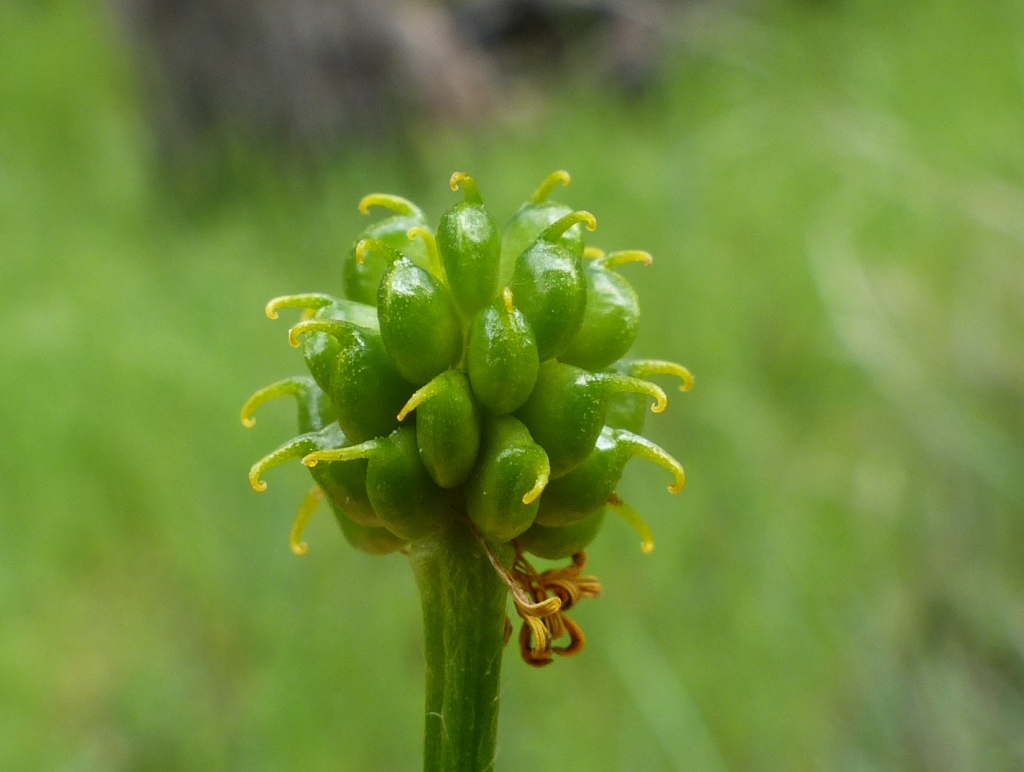Ranunculus lappaceus
Sm. Australian ButtercupVariable perennial, 10–60(–90) cm tall, with fibrous or rarely, fleshy tuberiform roots. Leaves all or mostly tufted at base; petioles mostly 5–30(–50) cm long, with appressed or spreading hairs; lamina ovate to deltoid in outline, 1.5–6(–9) cm long and wide, sparsely to densely appressed-hairy, 3-lobed to trifoliolate, the segments toothed or further lobed, the mid-lobe sometimes distant from the lateral lobes. Flowering stems erect, exceeding leaves, with spreading and/or appressed hairs, 2–10-flowered; sepals 5, spreading, elliptic, 4–7 mm long, hairy on back; petals 5, broadly obovate, sometimes truncate or emarginate, 7–17(–22) mm long, 6–15(–19) mm wide, yellow, glossy; nectary lobe cuneate, free for 30–60% of its length, c. 1–2 mm long; stamens 40–110. Achenes usually c. 20–50, obovate-cuneate, lenticular, c. 2–3.5 mm long, smooth on sides; beak weakly to strongly arched with a shortly recoiled tip, c. 1–2 mm long; receptacle hispid between achenes, glabrous in the staminal zone. Flowers mainly Aug.–Nov.
LoM, MuM, Wim, GleP, Brid, VVP, VRiv, MuF, GipP, OtP, WaP, Gold, CVU, GGr, DunT, NIS, EGL, EGU, WPro, HSF, HNF, OtR, Strz, MonT, HFE, VAlp. Also SA, Qld, NSW, ACT, Tas. Common in moist, forested, usually elevated areas almost throughout the State, occasional in subalpine grasslands, now rare in lowland grasslands and grassy woodlands (e.g. Werribee, Sunbury, Stratford).
Plants from the Murray River and adjacent areas between c. Cobram and Swan Hill are generally taller (to 90 cm or more), subglabrous, with larger leaves and flowers (dimensions represented by bracketed measurements in description above) and achenes with consistently strongly arched beaks. This giant form may warrant formal recognition. Specimens of otherwise typical plants from subalpine areas and some lowland sites with heavy soils show a tendency to produce fleshy tuberiform roots.
Walsh, N.G. (1996). Ranunculaceae. In: Walsh, N.G.; Entwisle, T.J., Flora of Victoria Vol. 3, Dicotyledons Winteraceae to Myrtaceae, pp. 35–63. Inkata Press, Melbourne.
 Spinning
Spinning


